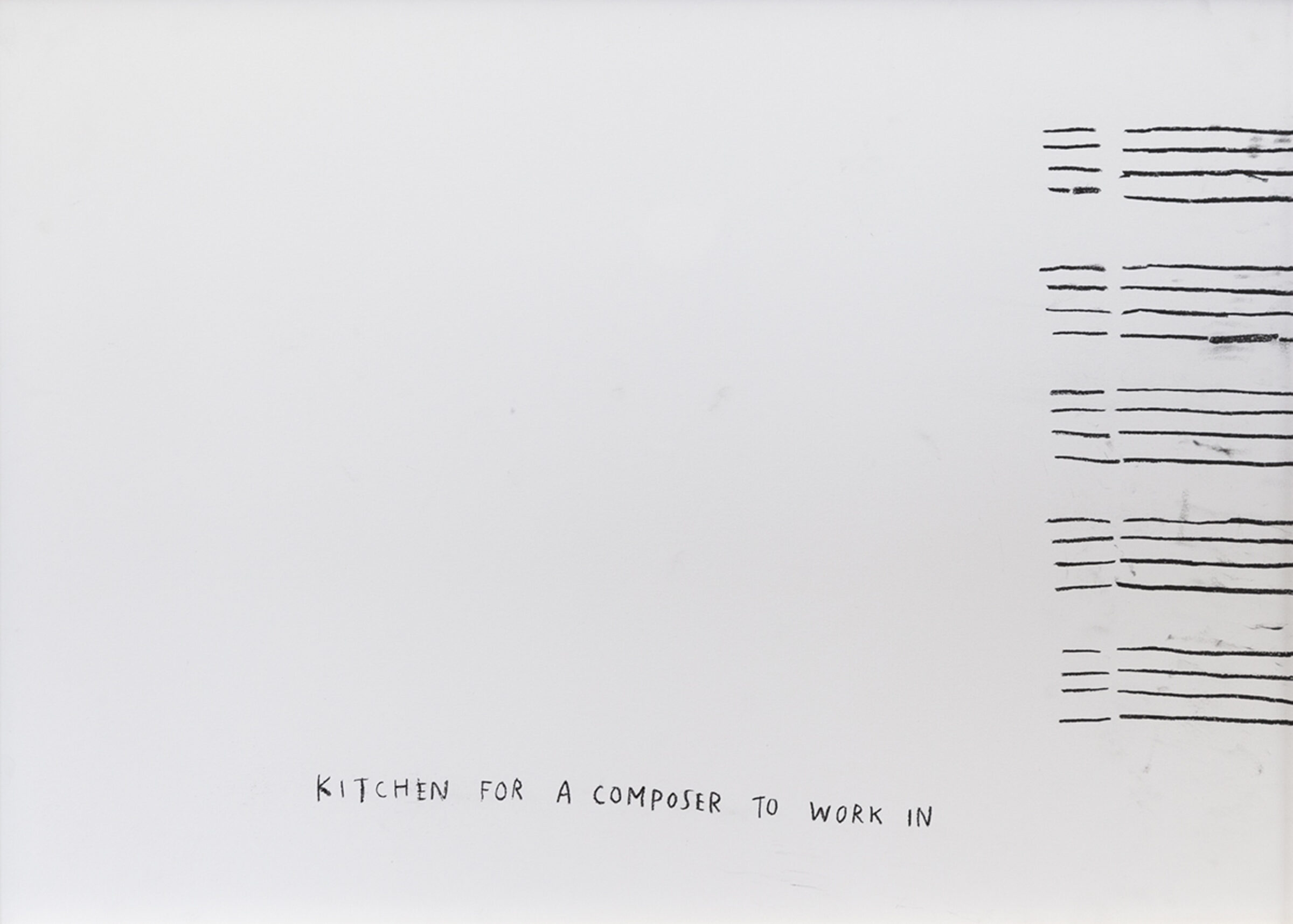Greene Naftali
Exhibition
The Tale That All But Shapes Itself
Curated by Scott Cameron Weaver
8th Floor
Press Release
The Tale That All But Shapes Itself
Curated by Scott Cameron Weaver
8th Floor
June 30 – August 5, 2016
Gerry Bibby
Juliette Blightman
Christine Sun Kim
Tim Rollins and K.O.S.
Cerith Wyn Evans
Taking its title from the somewhere in the middle of James Merrill’s epic poem, “The Changing Light At Sandover,” the exhibition The Tale That All But Shapes Itself brings together a group of artists whose work examines and dismantles distinctions between modes of information and communication. The works traverse axes of language, form, and time, in order to mine their intersections and invent new modes of reception.
This show is about text. An expanded notion of text, what constitutes a text, and its narrative and formal potential serves a common thread between the artworks in the exhibition. There is a glitch that occurs in transposition – but instead of being lost in translation, this exhibition situates itself in that space between.
Someone once described Gerry Bibby’s work as sitting uncomfortably between three chairs: between performance, poetry and sculpture. And truthfully Bibby’s artistic production is intentionally difficult to pinpoint, but thereby finds a foothold in yet uncharted territory. He is known for works that emerge through self-consciously complicated yet deceptively precise sculptural gestures that are inhabited by beautiful elements of text, and carefully choreographed yet wildly haphazard performance. His specific blend of sculpture and poetry locates Bibby’s performative practice as an inspiring and inventive redefinition of artistic process – one inscribed with playful subversions and strategic projections of complex cultural references.
His new series of work for this exhibition playfully subverts the idea of concrete poetry by creating a sculptural text in concrete. Bibby’s work is a (literally) transparent play on words where the performance of dragging a pillowcase through concrete to create the letters D, R, A, and G, reminds us how language is as much an assumed—or drag—performance as anything else.
The legendary New York–based collective, Tim Rollins and K.O.S. (Kids of Survival) have been exhibiting internationally since the mid-80s. The origins of this groundbreaking artist collective lie in a South Bronx public school, where Rollins developed a pedagogical method aiming to nurture individual abilities. Since then, their artistic practice has been widely discussed for over 3 decades. Classical and modern literature, philosophy, political theory, and music became the raw materials K.O.S. used to create an entirely unique way of working. In a process they have come to call “jamming,” Rollins or one of the students would read aloud from a selected text, while the other members draw and relate the stories to their own experiences. The results would be combined in frequently large-scale, collaborative paintings, using the pages of the book in question as a canvas.
The River (Meander) – after Duke Ellington was the result of a similar sort of workshop, organized together with a group of young people as part of a retrospective exhibition at the Kunstmuseum in Basel in 2012. Each panel is a page from Duke Ellington’s orchestral composition The River, and painted with indigo ink by the students.
Juliette Blightman's series of drawings and paintings are part of an ongoing project inspired by moments in her life, the things she sees, the places she visits, and the friends and people she encounters. Each piece speaks to an unfolding narrative and invites us on an almost cinematic journey through a glossary of personal and direct reactions to her surroundings. Coming from a background in film, Blightman's ephemeral work is usually experienced through a heightened awareness of time. Her fascination with determinate, segmented allotments of time drives her production and ultimately defines her audience’s participation in the work itself. Blightman’s “Typing” series, for example, chronicles various recurring themes in her work such as love, weather, silence and time. The sound piece, Soundtrack to Typing Time, is a field recording of the making of the typed collage, with Jacques Tati’s film, Playtime, barely audible, playing in the background.
Christine Sun Kim’s work explores the materiality of sound through its visualization in drawing, painting, and performance. Kim – who was born deaf – develops a visual language informed by a visual experience of sound. Combining aspects of graphic and musical notation, body language and American Sign Language, she uses these systems to create spaces for a composer to work within. The smudges and smears in the drawings are almost like sound in space, responding to Kim’s visual architecture.
And finally, the work by Cerith Wyn Evans, created especially for this exhibition, is a poetic meditation in light. The reversed text is legibly revealed in the windows’ reflection to read, “I call your image to mind…,” superimposed over the ever-changing New York skyline. Wyn Evans’ work marks an interface between interior and exterior, articulating a play between materiality, space, and time – locating this event in a moment of cognition, harnessing the potential of language to create moments of rupture and delight.


